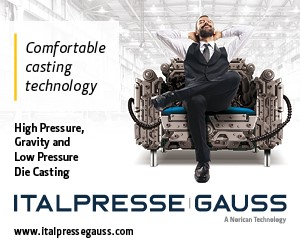Magnesium Alloys
- FEA is useful
- Add ribs to increase strength
- Mid-range elevated temperature properties
- AS & AE alloys offer creep resistance
- AM Alloys improve ductility & impact resistance
The strength, deflection and vibration response of magnesium die castings can be predicted by FEA in magnesium die castings as well as in aluminum. The excellent casting characteristics of magnesium alloys allow the latitude to design thin and closely spaced ribs and gussets with minimum draft to achieve strength and rigidity. These properties have made magnesium a viable alternative when redesigning from other materials.
The mechanical properties of magnesium die castings at elevated temperatures are generally below aluminum and above zinc and ZA. AS and AE alloys may be specified where creep resistance is critical. AM alloys are specified when impact resistance or ductility is critical.
Zinc Alloys
- Highest impact strength
- Lowest elevated temperature properties
- Creep occurs in tension below room temperature
Zinc alloys offer the highest impact strength. The mechanical properties at elevated temperatures are the lowest of the four groups. The creep threshold in tension, even at low stress levels, is below room temperature, so that creep should be addressed when operating conditions indicate it is a factor.
Zinc Aluminum (ZA) Alloys
- Improved elevated temperature properties over zinc
- Increased creep resistance over zinc
- Creep occurs in tension above 10,000 psi (69 MPa) at room temperature
The performance of ZA alloys at elevated temperatures and their creep resistance are superior to the zinc alloys. Some creep may be expected under tensile loads at room temperature at stresses above ten thousand pounds per square inch or sixty nine mega pascals. Creep should therefore be addressed when operating conditions indicate it is a factor.








